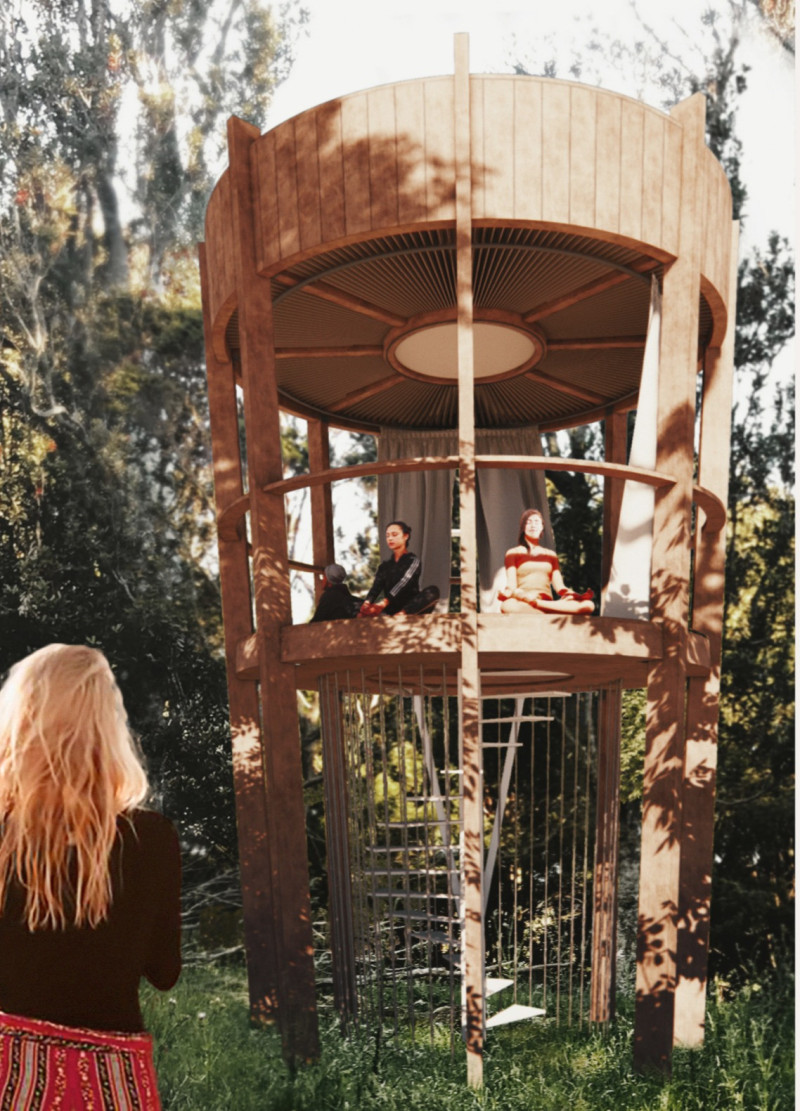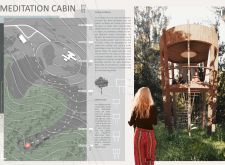5 key facts about this project
The Meditation Cabin is designed to provide a space for reflection and inner peace. Set within a lush landscape, it functions as a retreat that invites its users to leave behind daily distractions and engage deeply with nature. From the beginning of the journey to the cabin, visitors are encouraged to embrace their senses, setting the tone for their experience before they even arrive.
Conceptual Framework
A central aspect of the design is "The Essence Holder," a feature along the pathway that releases a scent from local flowers. This element is carefully placed to engage users as they walk towards the cabin, enhancing their sensory experience. By introducing this fragrant element, the aim is to deepen the connection between the users and the natural environment surrounding them.
Morphological Design
The shape of the Meditation Cabin reflects its natural setting. It features an organic form that blends with the landscape, promoting a sense of harmony. The design employs symmetry and repetition, incorporating vertical and rounded elements that evoke feelings of comfort and calm. These characteristics not only provide visual interest but also ensure that the space accommodates different forms of meditation.
Material Selection
Material choices are fundamental to the design's effectiveness. Plywood and wooden beams are the primary materials, selected for both their strength and their aesthetic appeal. The use of these materials helps create a warm and inviting space while also ensuring durability. This selection supports the overall goal of fostering a tranquil atmosphere conducive to meditation.
As users approach the cabin, they begin their journey under the protective cover of trees, gradually moving toward a more secluded interior. This transition from the open air to the cabin creates a focused environment for thought and reflection. The careful arrangement of materials and design elements makes the cabin not just a physical space but a haven for mindful practice.























































